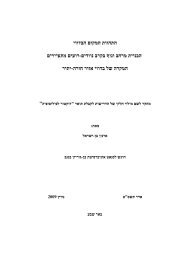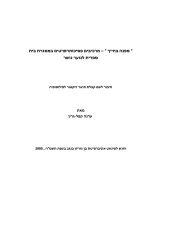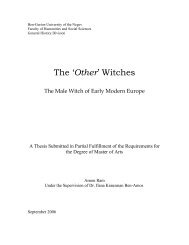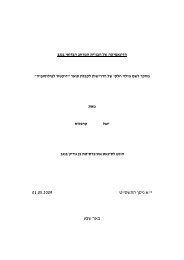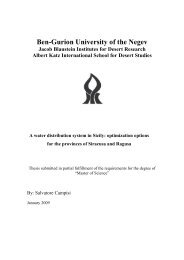CHARACTERIZATION OF DESERT DATE (Balanites aegyptiaca)
CHARACTERIZATION OF DESERT DATE (Balanites aegyptiaca)
CHARACTERIZATION OF DESERT DATE (Balanites aegyptiaca)
You also want an ePaper? Increase the reach of your titles
YUMPU automatically turns print PDFs into web optimized ePapers that Google loves.
Mass spectrometry<br />
Mass spectrometry (MS) provides information about the molecular weight and chemical<br />
structure of the compound analyzed. The mass spectrometer creates charged ions from<br />
molecules. These ions are extracted into the analyzer region of the mass spectrometer and<br />
separated according to their mass-to-charge ratios (m/z). The separated ions are detected<br />
and the signals are sent to the data system where the m/z ratios are stored, together with<br />
their relative abundance, for presentation in the format of an m/z spectrum. Because of its<br />
specific “finger-print” property, MS is very useful in qualitative analyses of unknown<br />
compounds. MS is generally used as a detector in GC or HPLC apparatuses.<br />
MS has played an important role in structural analysis of saponins. In early studies,<br />
derivatization was required for using electron impact mass spectra (Tomova et al., 1974).<br />
Later, field desorption and fast atom bombardment spectra were employed to analyze<br />
derivatized and underivatized saponins, providing evidence about molecular mass and<br />
sugar sequence by cleavage of glycosidic bonds (Wu et al., 1996; Wang et al., 1997). More<br />
recently, electrospray ionization (ESI) in the positive and negative ionization mode has<br />
become one of the most effective analytical tools for structural characterization of native<br />
saponins (Cai et al., 2001). Multi-stage tandem mass spectroscopy (ESI-MS n ) of molecular<br />
ions is used for detailed structural analysis of underivatized saponins (Fang et al., 1999).<br />
The fragment ions from glycoside cleavage provide information about the mass of<br />
aglycone, the type of the monosaccharide, and the sequence and branching of the<br />
oligosaccharides. The fragment ions from cross-ring cleavages of sugar residues give<br />
information about the linkages between units.<br />
LC-MS and LC-MS/MS have shown easy and rapid methods for the identification of<br />
saponin and sapogenin composition compared to the traditional approaches which required<br />
extensive purification and, in the case of GC-MS, conversion of the saponins to their<br />
corresponding sapogenins and volatile derivatives. Both the extensive purification and the<br />
derivatization steps are time-consuming and are known to create artifacts (Muir et al.,<br />
2000).<br />
13





